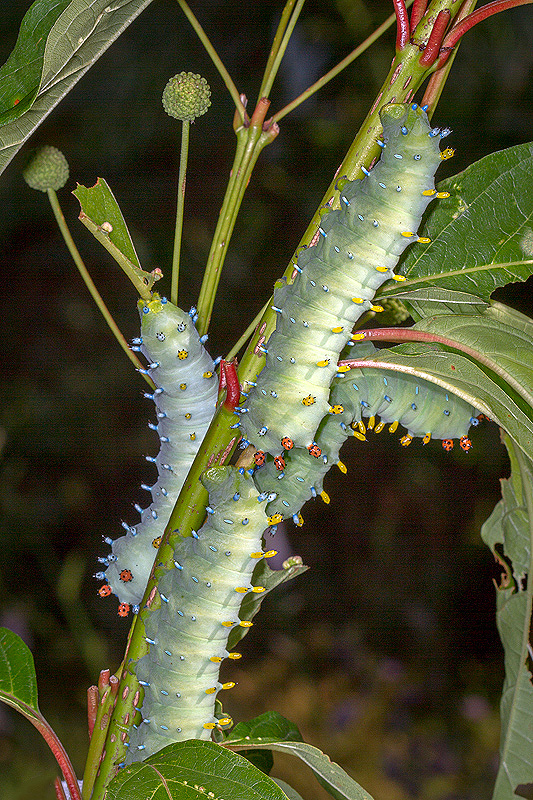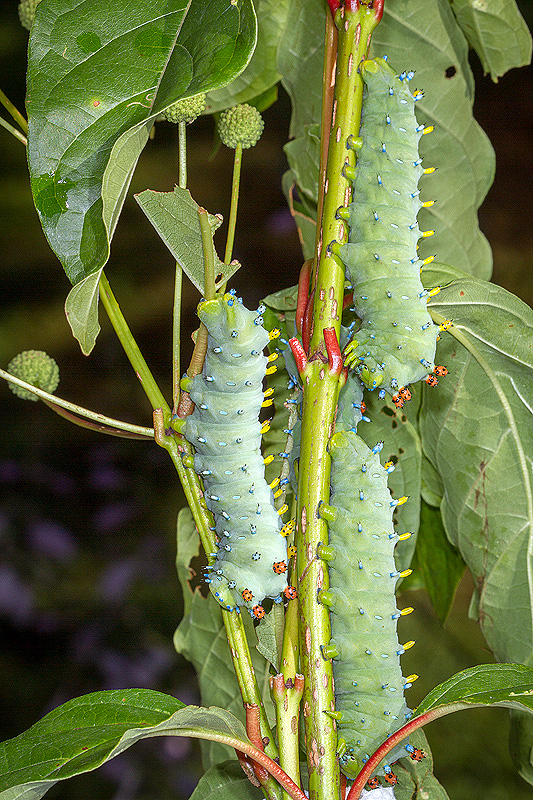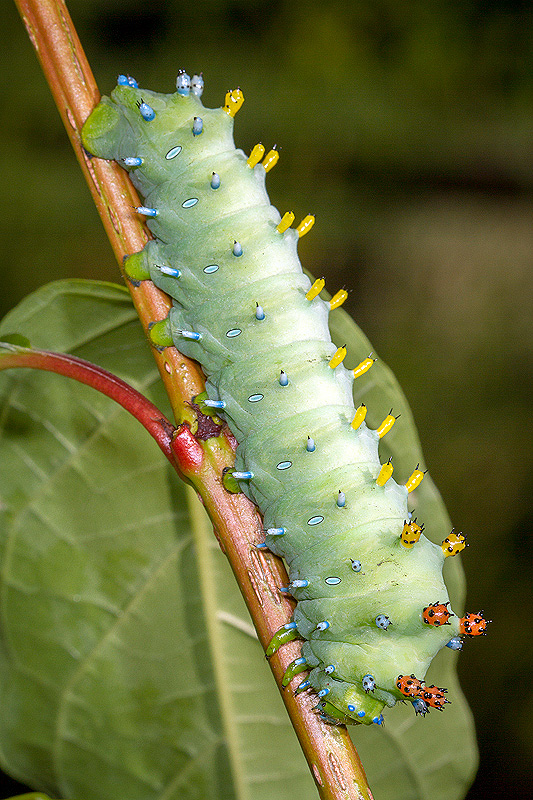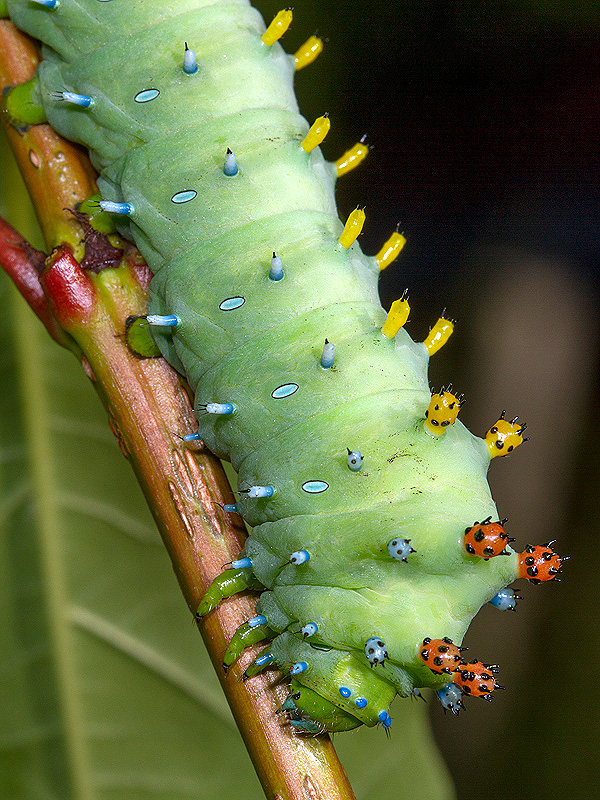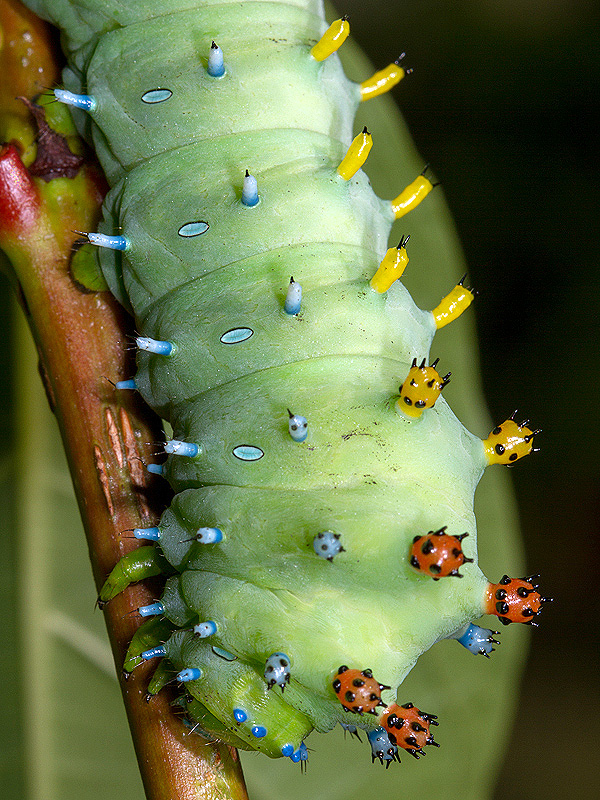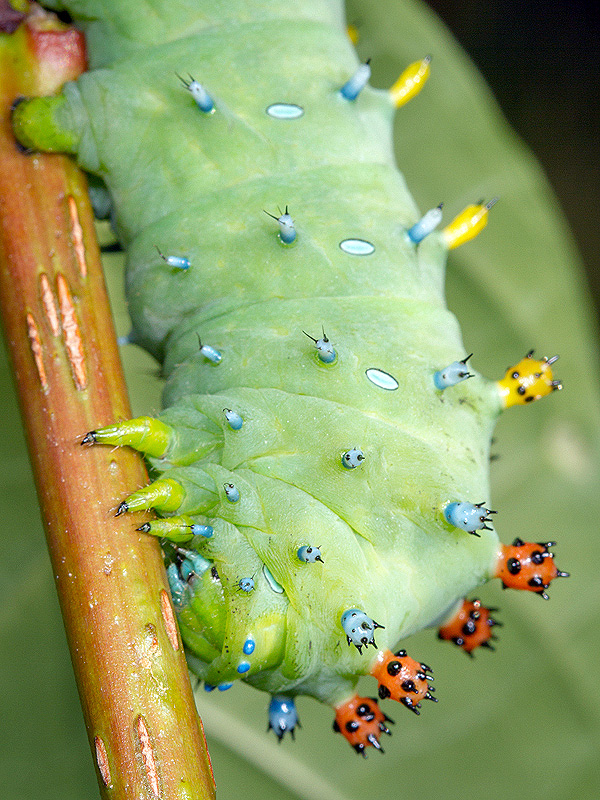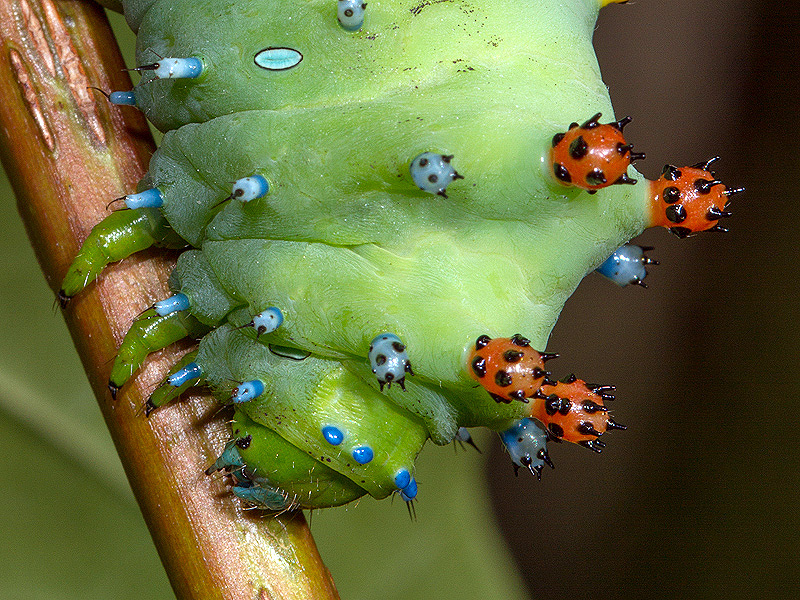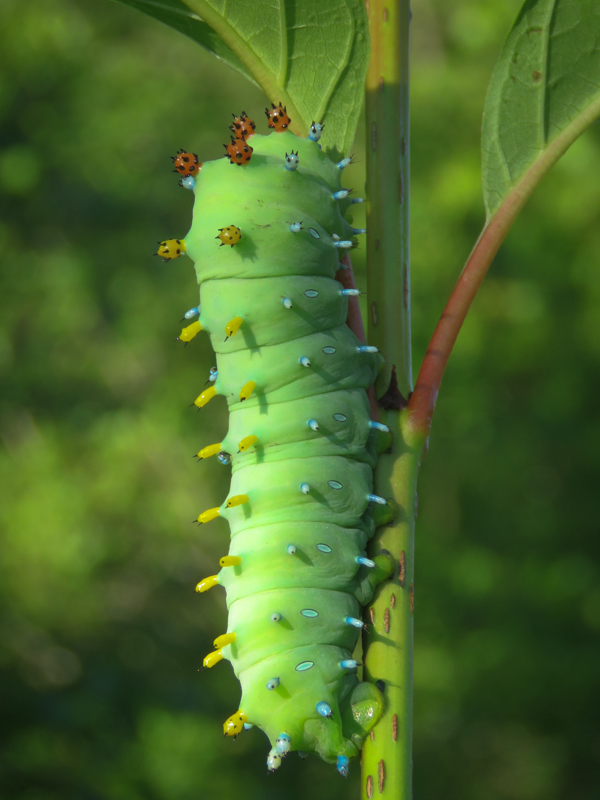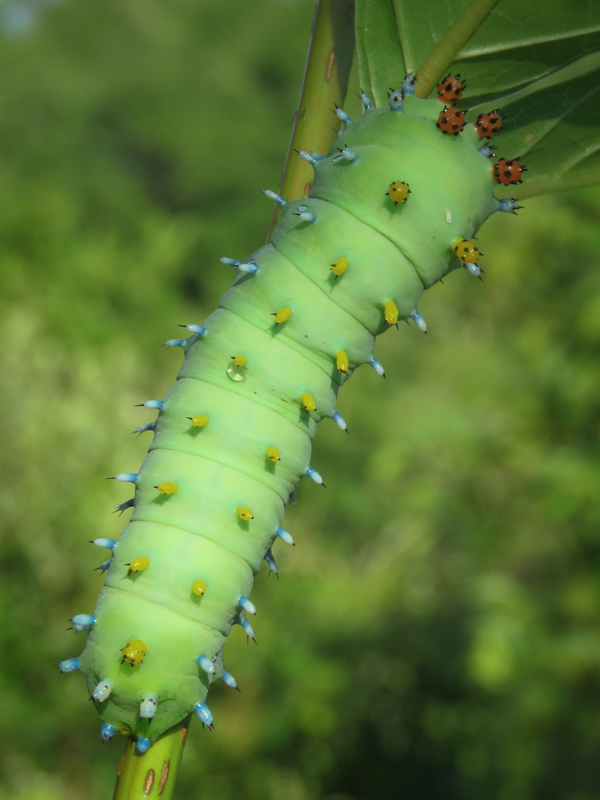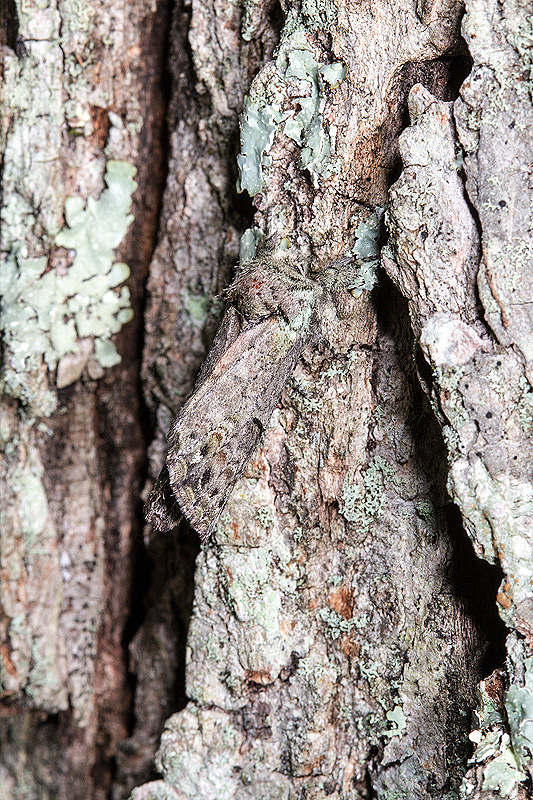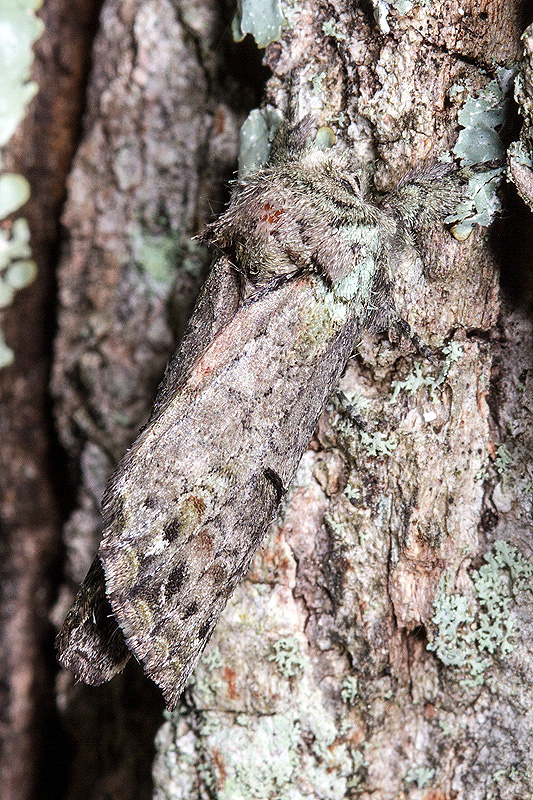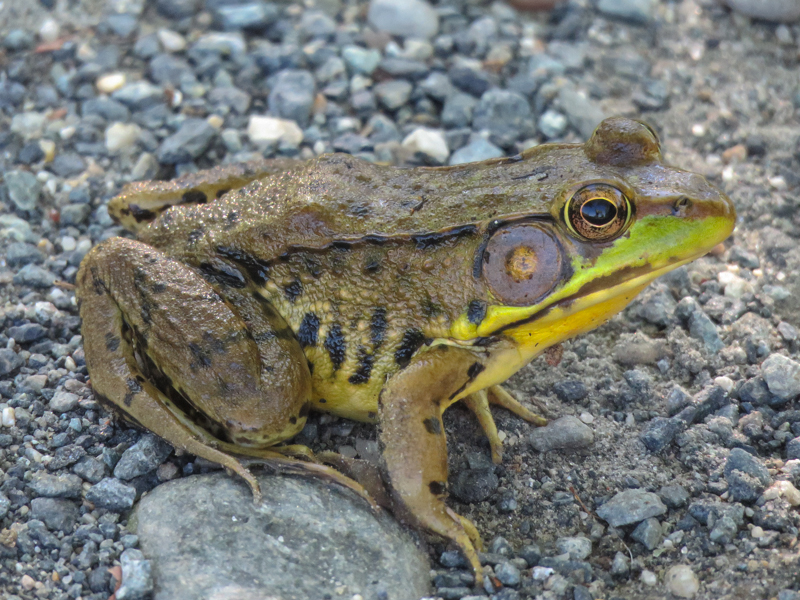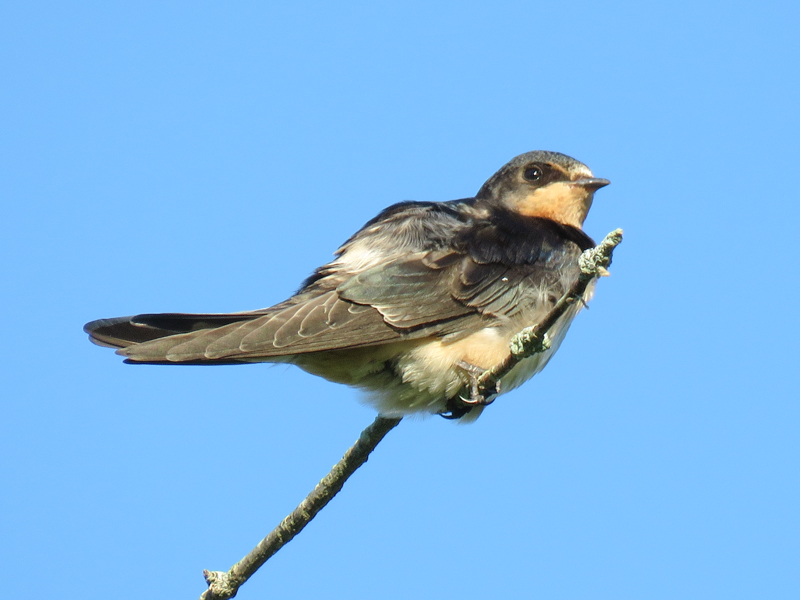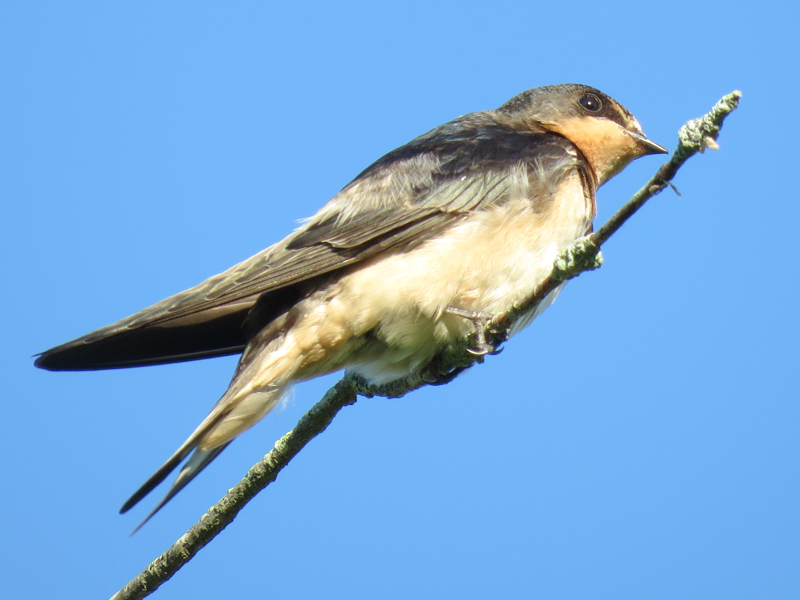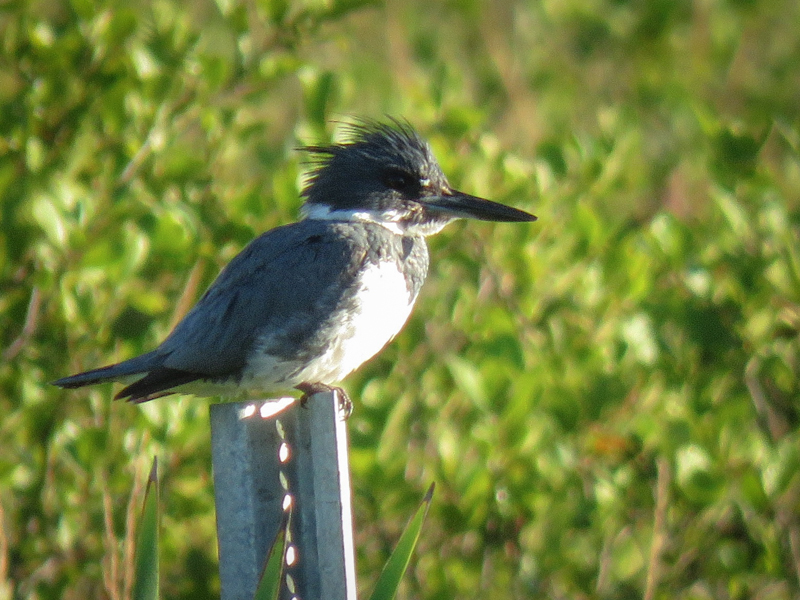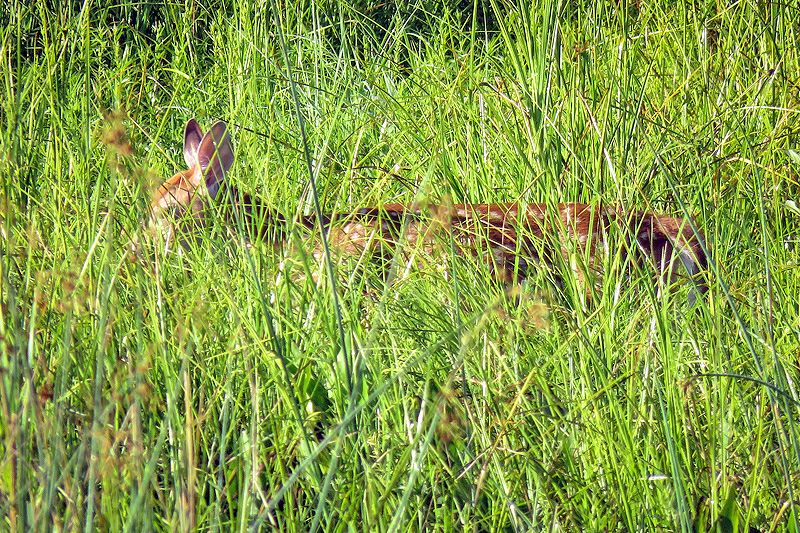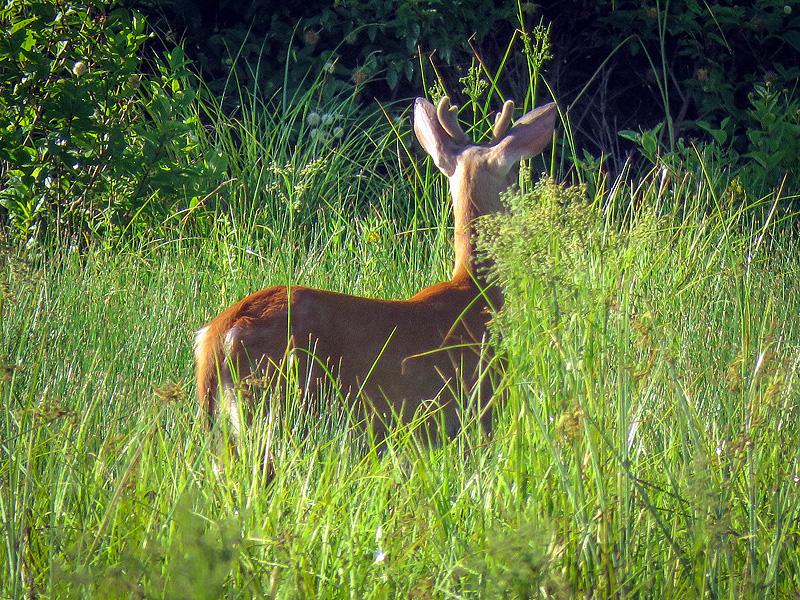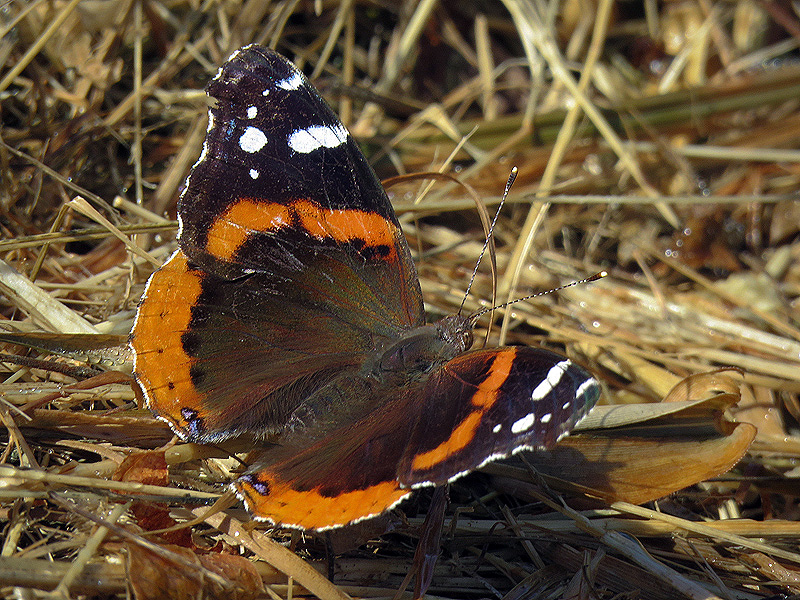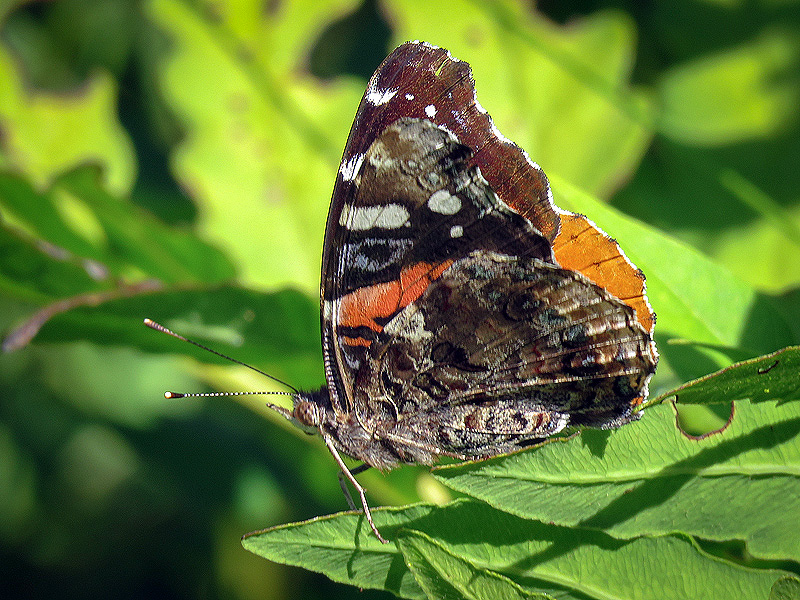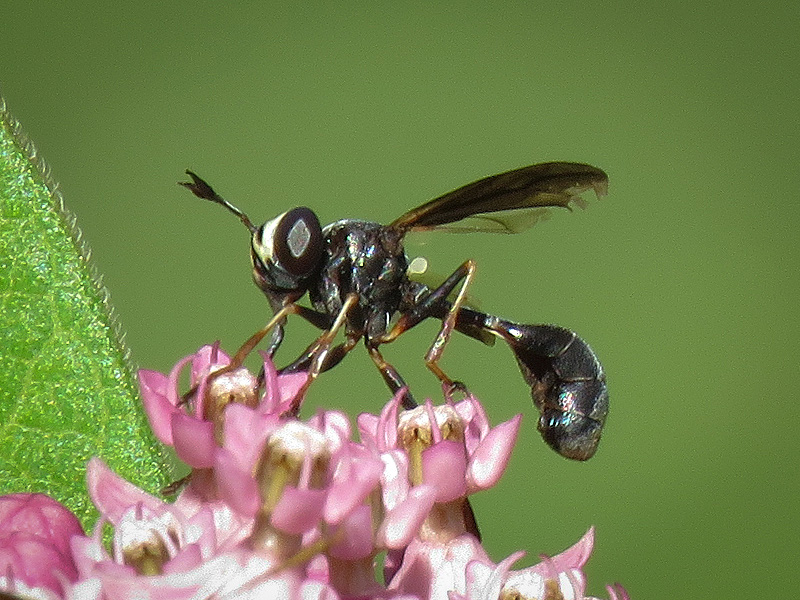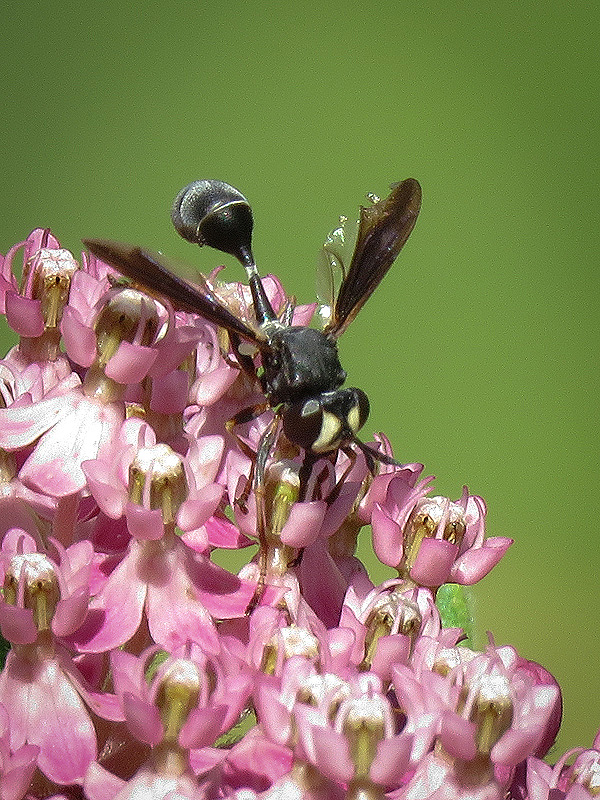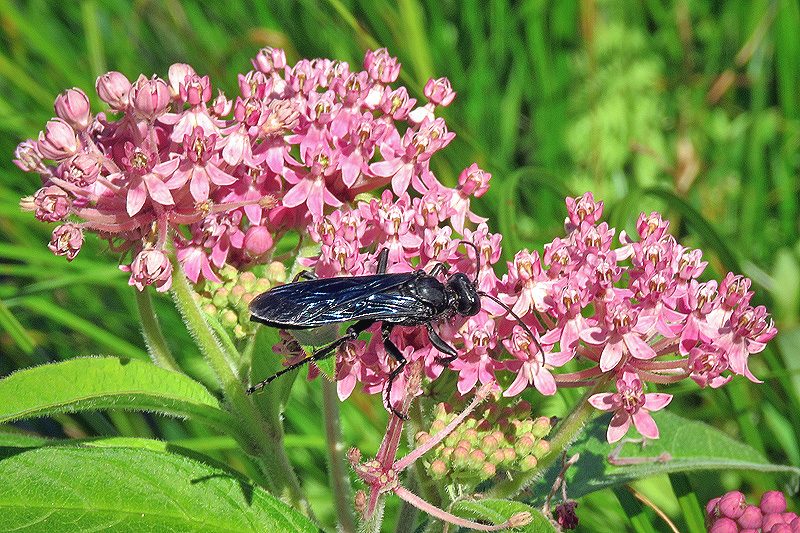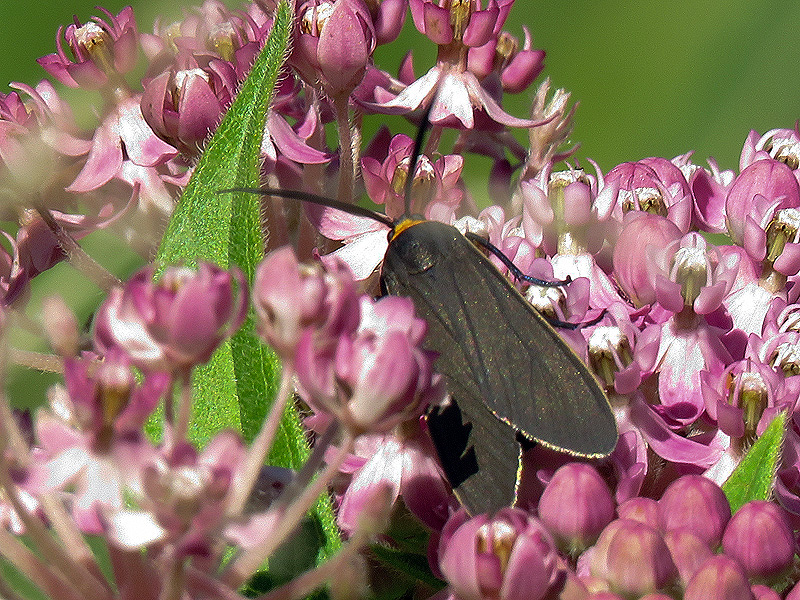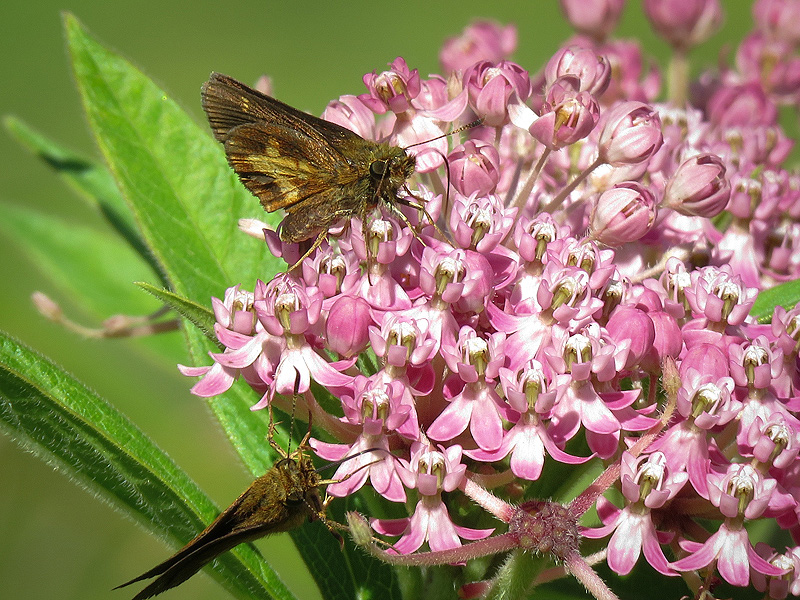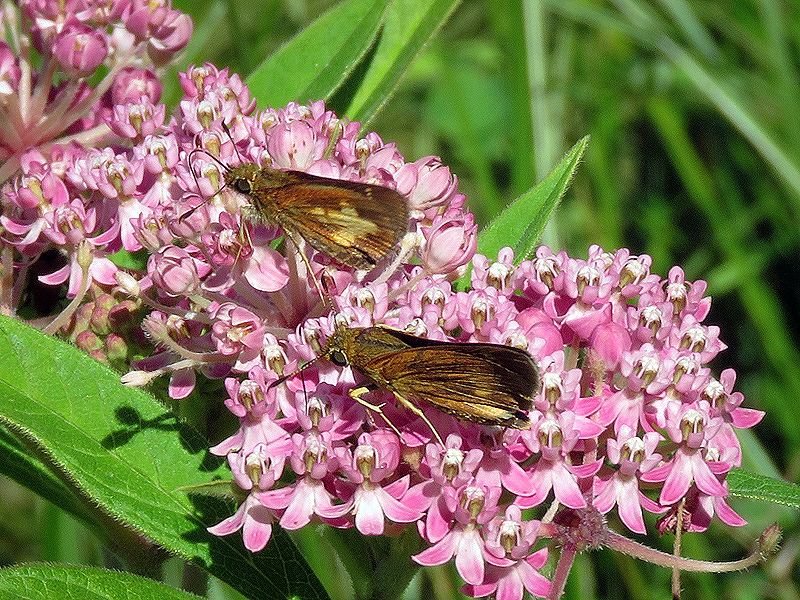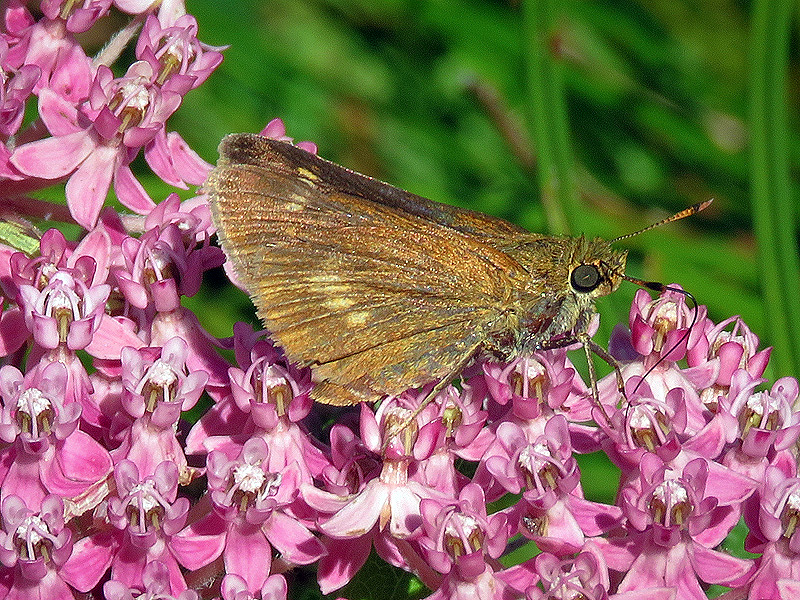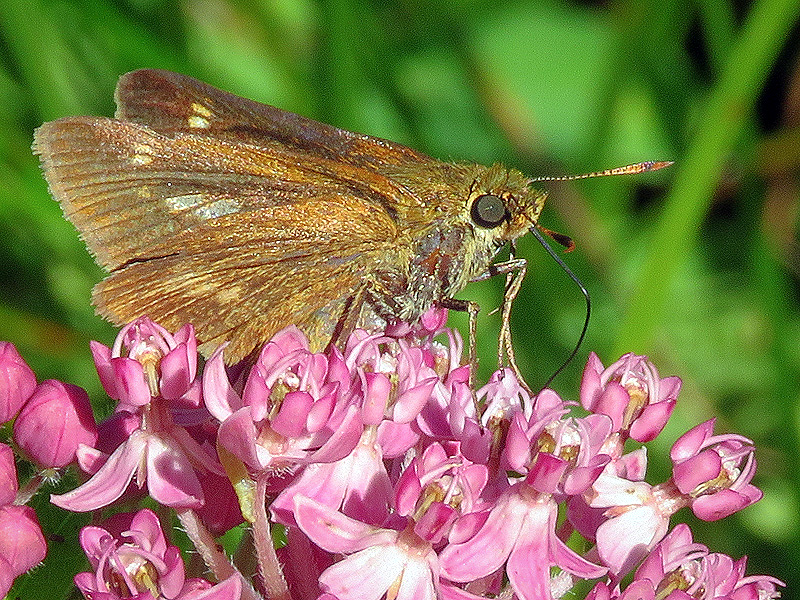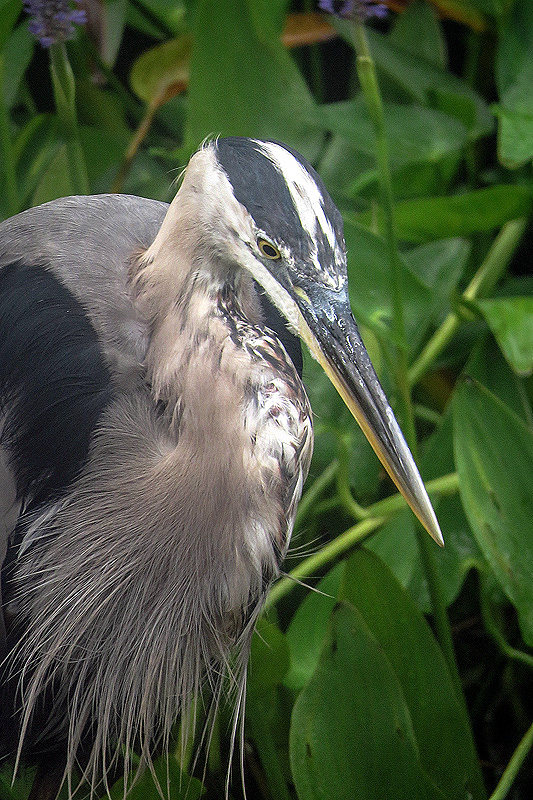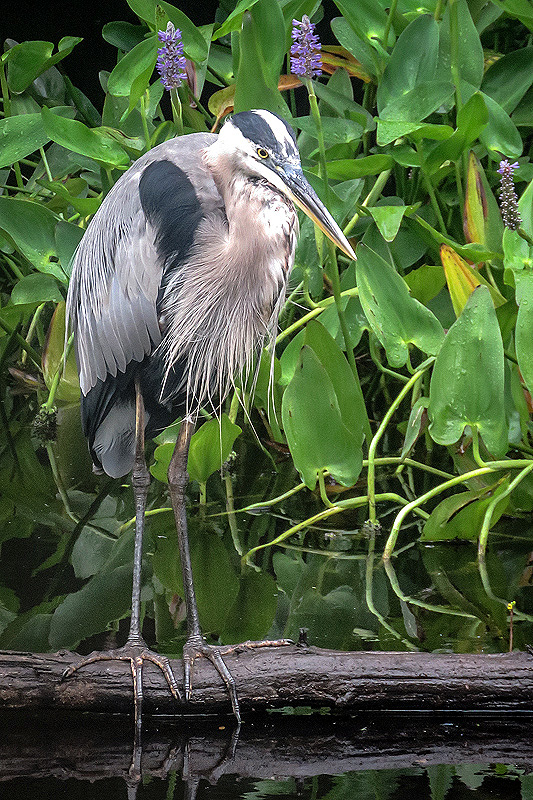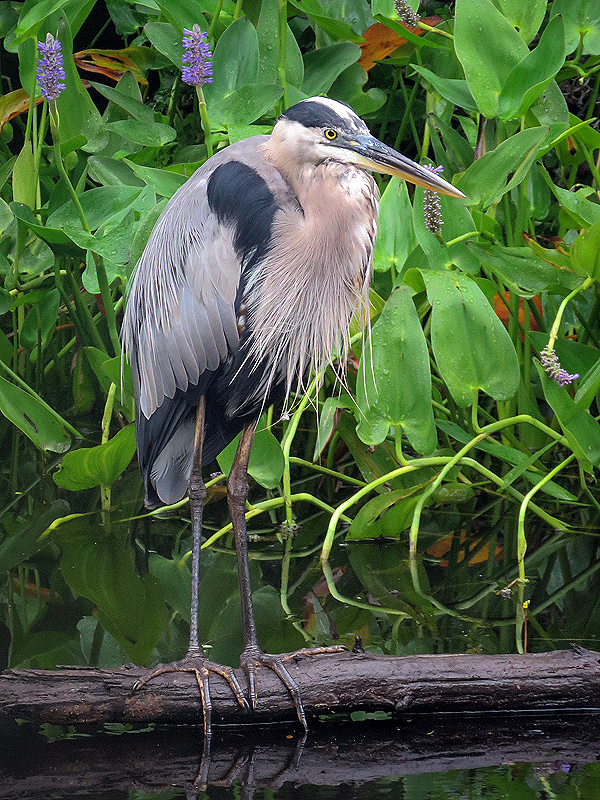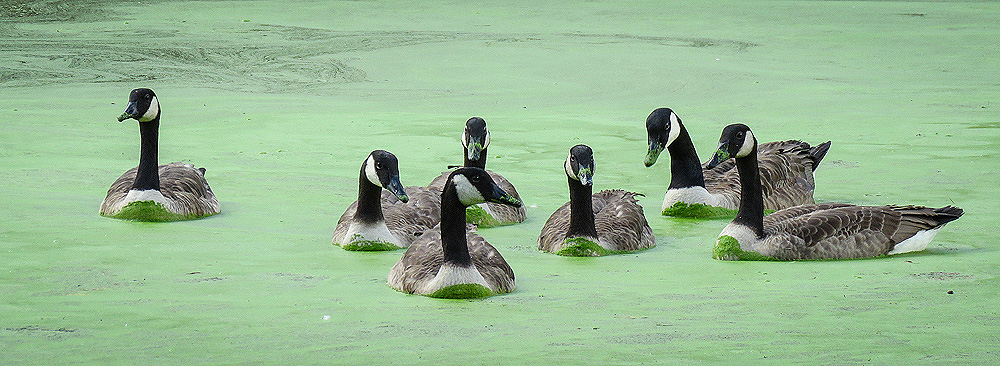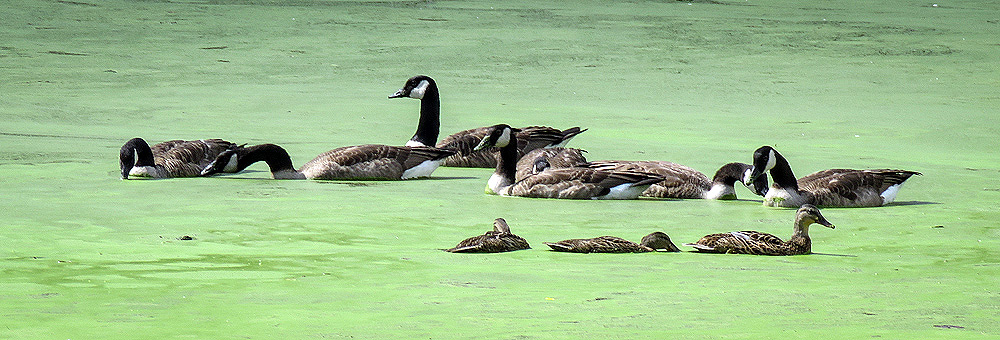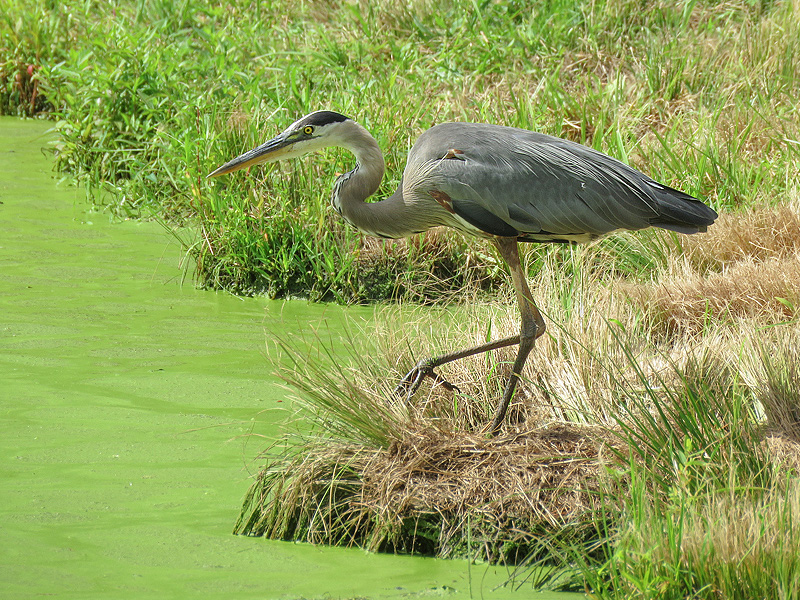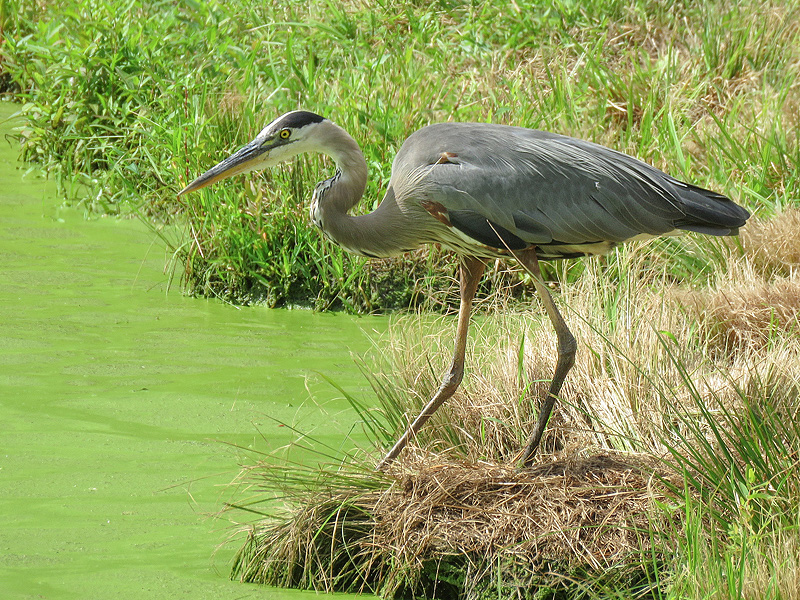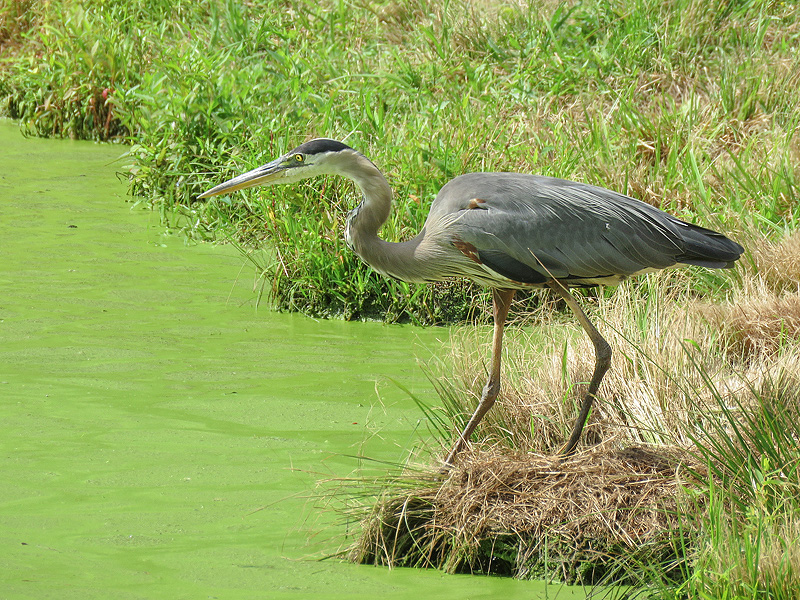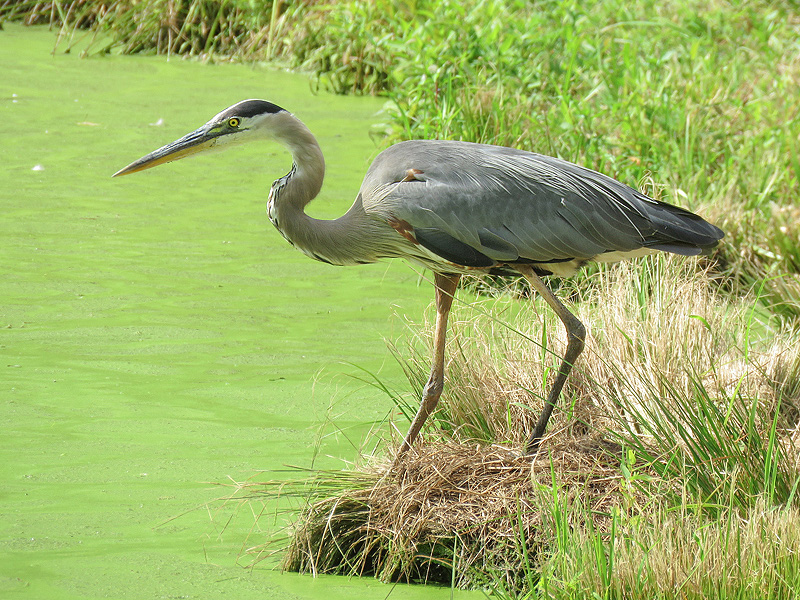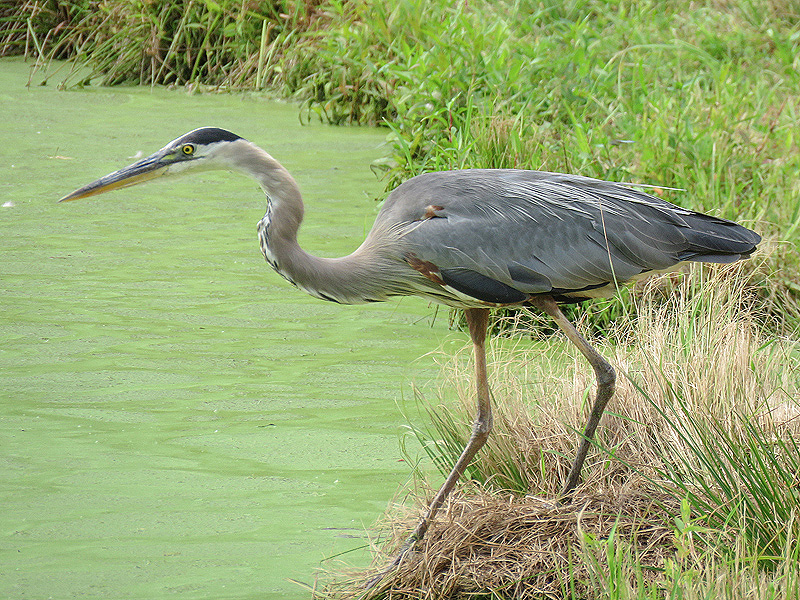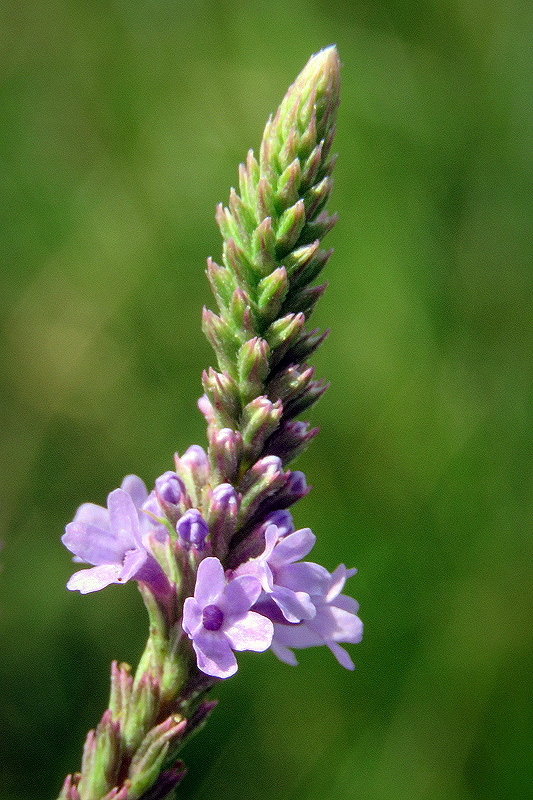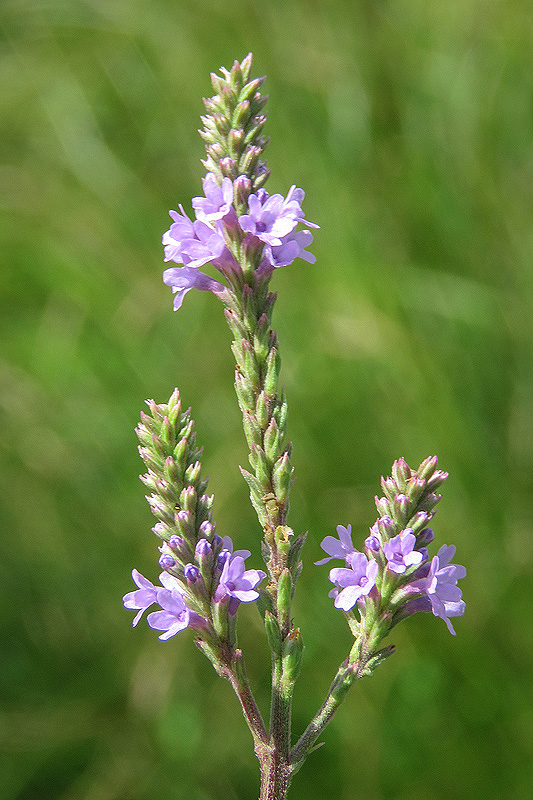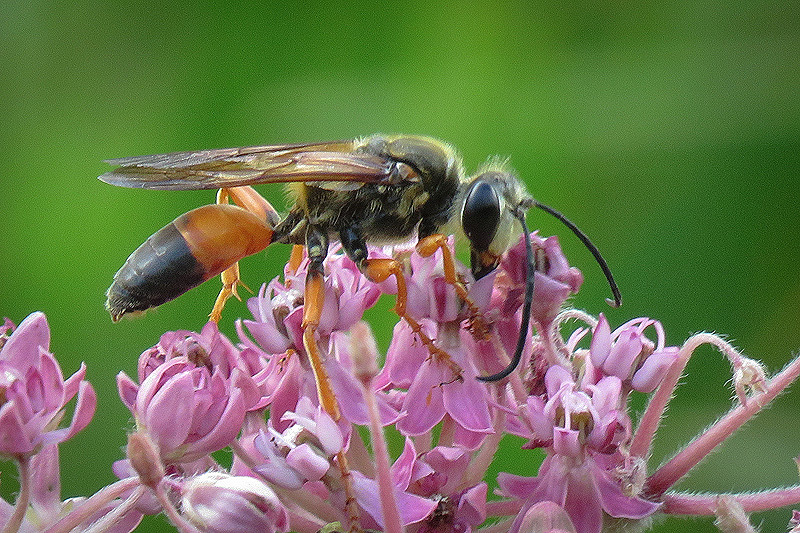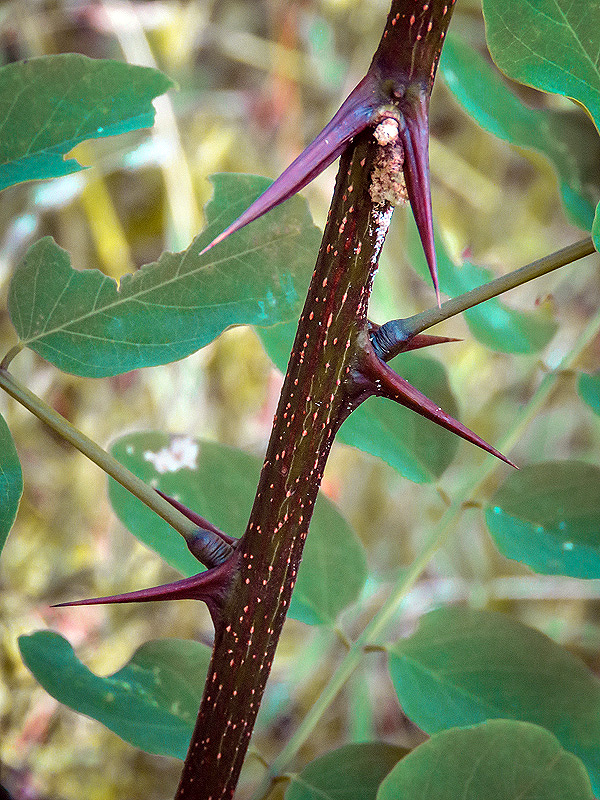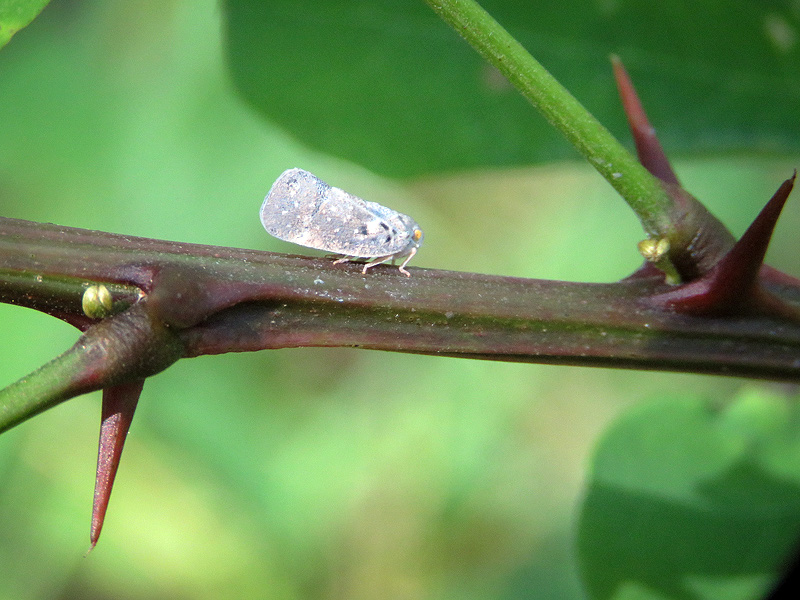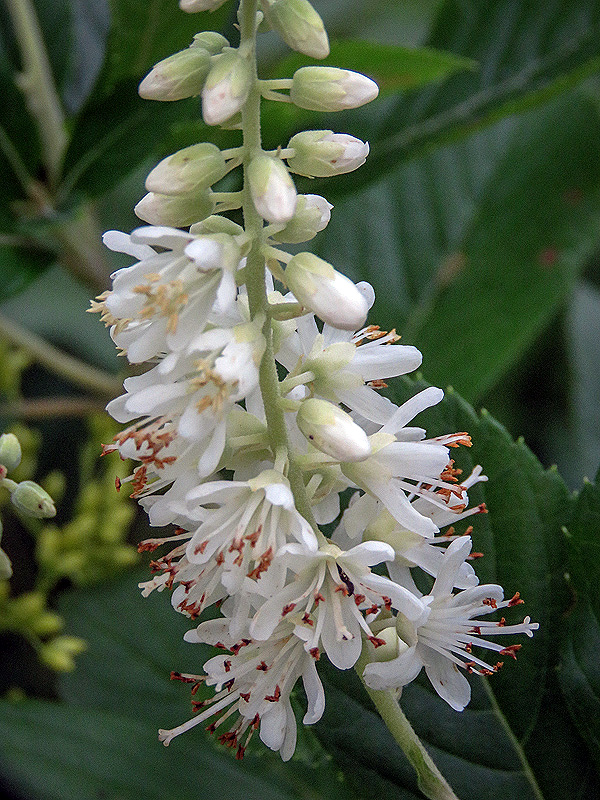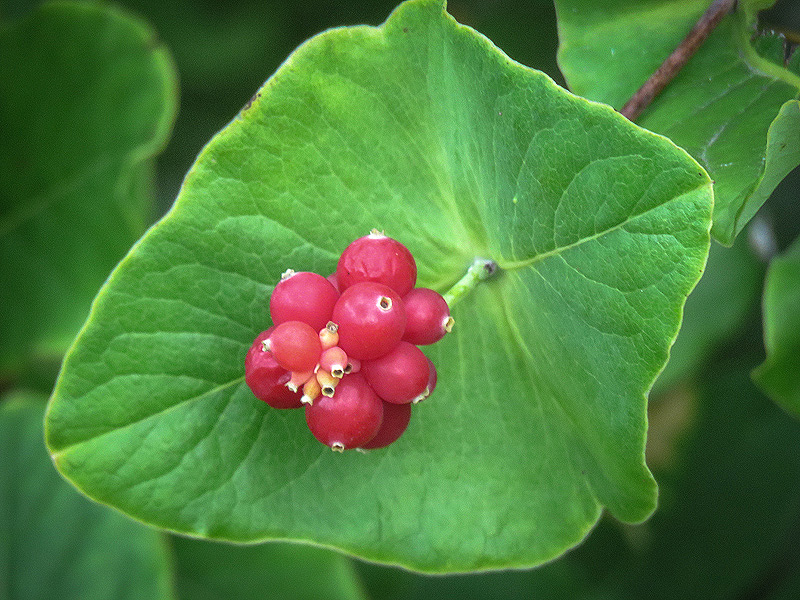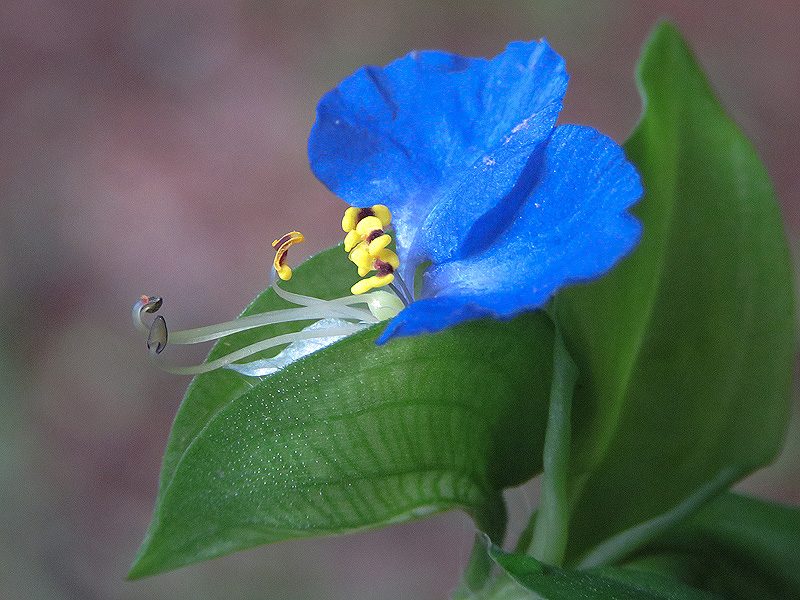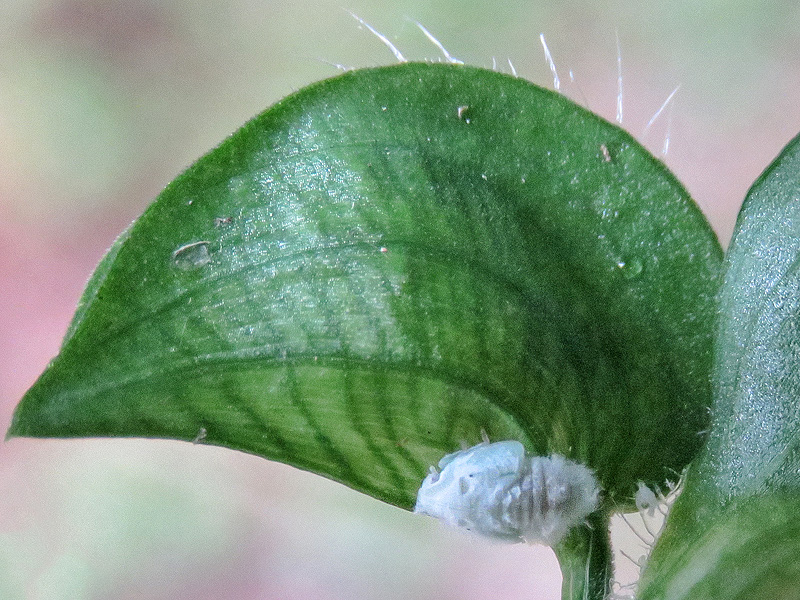Along the Air Line... 2018 - Summer, Part 6 The Air Line Trail in Eastern Connecticut - Stan Malcolm Photos |
HOME: Air Line... 2018 Pages Menu Stan's FlickR Albums |
July 20th. Four of five Cecropia Moth (Hyalophora cecropia) caterpillars I found feeding on Buttonbush (Cephalanthus occidentalis). |
In 17 years walking the marsh, I've never found a Cecropia caterpillar, and only two viable cocoons. |
The caterpillars are about 3 inches long; in other words close to full size, ready to spin their cocoons. |
The tubercles are probably defensive but I'm not sure how effective they are. |
The black edged blue ovals are spiracles, the external openings to the tracheal system that brings air directly to the body tissues. |
|
|
|
|
For some years, I've reared Cecropia Moths for release in the wild. Follow this link for photos of the entire life cycle: http://www.performance-vision.com/cecropia/index.htm |
Find the insect? |
It's the moth of the Unicorn Prominent (Schizura unicornis) caterpillar I found on the trail last month. Hard to see, but in addition to the general bark mimicry, there are small patches of pale blue-green scales that mimic lichen. |
Green Frog (Rana clamitans). |
Tree Swallows (Tachycineta bicolor) with at least one young Barn Swallow (Hirundo rustica) near the center. |
A young Barn Swallow (Hirundo rustica). |
|
A male Belted Kingfisher (Ceryle alcyon). |
July 21st. White-tailed Deer (Odocoileus virginianus) spotted fawn... |
...and a buck in velvet. |
Red Admiral (Vanessa atalanta). This butterfly doesn't overwinter in Connecticut. Instead, migrants arrive from the south, breed here, and return to the south in fall. Populations here are modest but in "breakout years" they can be very abundant. |
|
At Cranberry Boig, lots of insects on Swamp Milkweed (Asclepias incarnata). Thick-headed Flies (Family Conopidae, Physoconops sp.) are wasp mimics, obviously. Their larvae are parasites of various other insects. |
|
Great Black Wasp (Sphex pensylvanicus). Females provision underground burrows with katydids as food for their larvae. |
Virginia Ctenucha ("Ten-ooh-cha") moth (Ctenucha virginica); vaguely wasp mimetic. |
Mulberry Wing Skipper (Poanes massasoit). The cross shape on the hind wing is diagnostic. |
Mulberry Wing Skipper (Poanes massasoit) and a Little Glassywing Skipper (Pompeius verna). |
Little Glassywing Skipper (Pompeius verna). |
The species gets its name from the two transparent spots on the front wing. |
July 24th. One of three Great Blue Herons (Ardea herodius) at the marsh this morning. |
I'm pretty sure this is the one who had the neck wound. It seems pretty well healed now. |
Gotta love the feet. |
|
Afternoon visit to Cranberry Bog in East Hampton. One of the two Canada Goose (Branta canadensis) families.... |
...plus three Mallards (Anas platyrhynchos). |
Great Blue Heron (Ardea herodius)... doin' the hokey pokey? |
|
|
|
|
Blue Vervane (Verbena hastata). |
|
Great Golden Digger Wasp (Sphex ichneumoneus). |
I saw several young Honey Locust (Gleditsia triacanthos) trees. Thorny. |
I mean THORNY! |
An adult Flatid Planthopper (Family Flatidae; probably Metcalfa pruinosa) on the Honey Locust. |
July 25th. Sweet Pepperbush (Clethra alnifolia). Note pistils open to accept pollen on the lower flowers where anthers have gone by - while pollen on upper flowers is fresh but pistils not showing. This promotes some out-crossing. |
Limber Honeysuckle (Lonicera dioica). |
Asiatic Day-flower (Commelina communis). |
|
Flatid Planthopper nymph, covered in waxy filaments (Family Flatidae; probably Metcalfa pruinosa). |
